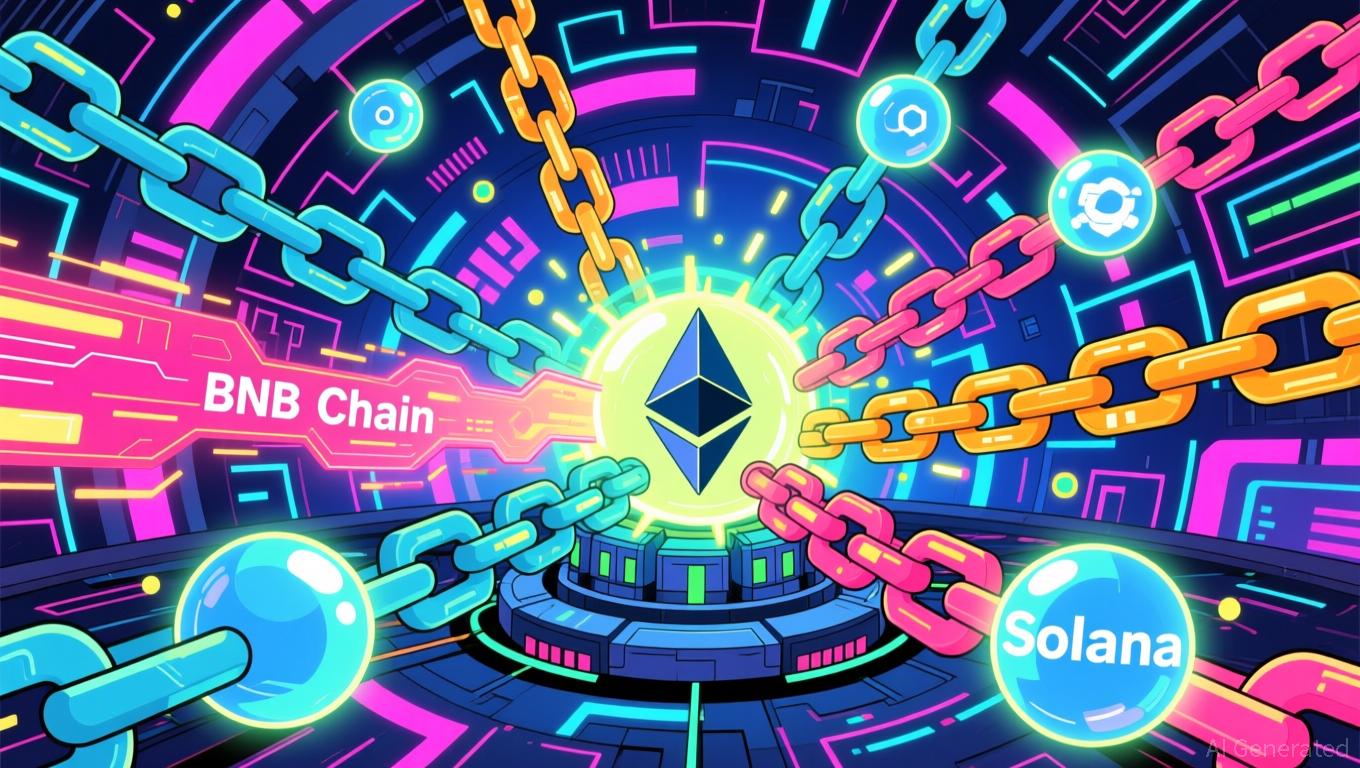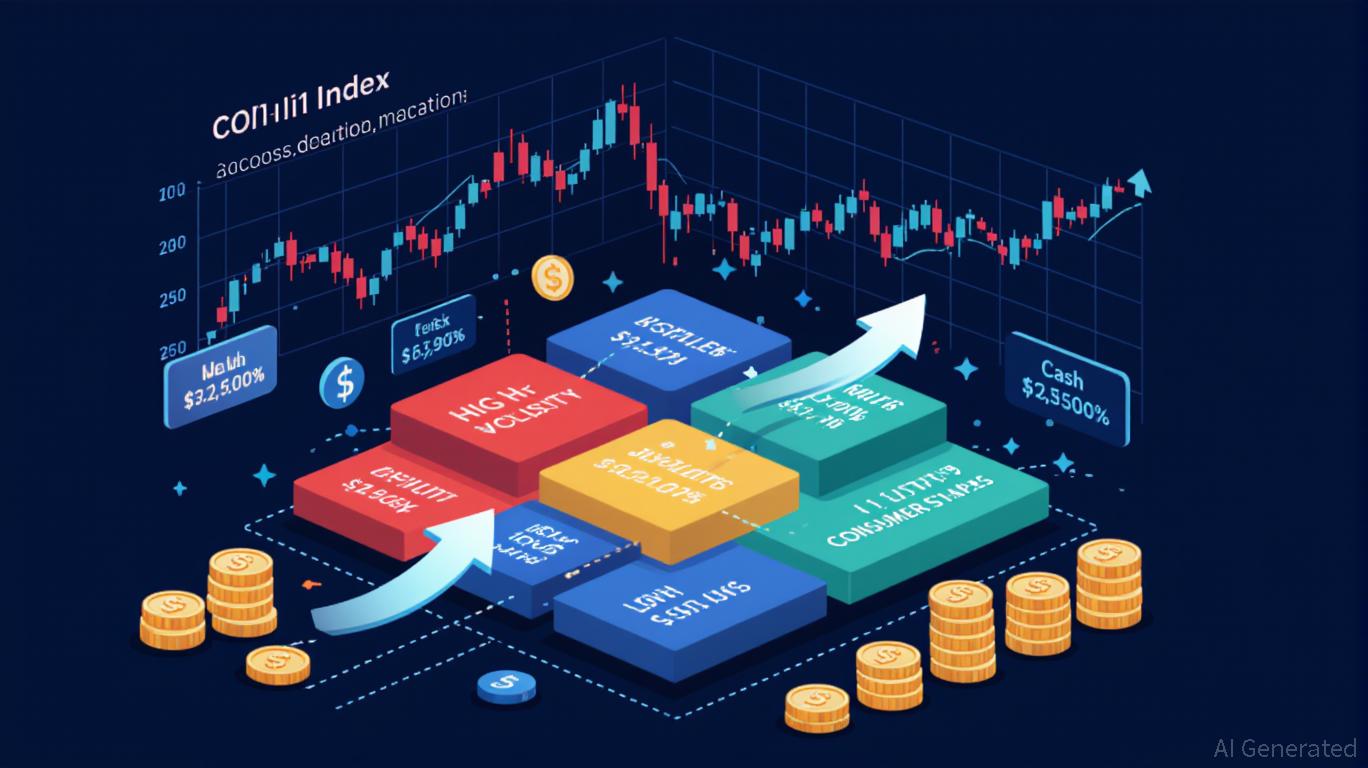Ethereum News Today: Ethereum’s Fusaka Update: Scaling Goals Face Challenges From Validator Compromises
- Ethereum's Fusaka upgrade (Dec 3, 2025) introduces PeerDAS to enhance scalability by verifying rollup data without full dataset downloads. - BPO forks enable incremental blob capacity increases (e.g., 14 blobs/block by Jan 7, 2026), avoiding disruptive hard forks while supporting 100k+ TPS via L2 solutions. - L2 data fees may drop 40%-60% with PeerDAS, but validators face trade-offs between reduced storage demands and increased upload requirements as blob capacity grows. - Market reactions remain mixed:
Ethereum’s Fusaka Upgrade: A Major Leap Forward
Scheduled for activation on December 3, 2025, Ethereum’s Fusaka upgrade is a crucial advancement in the network’s ongoing efforts to boost scalability and data efficiency. The name “Fusaka” merges the previous internal project titles Osaka (execution layer) and Fulu (consensus layer). This upgrade introduces PeerDAS (peer data availability sampling), a new method that lets validators check rollup data without needing to download the entire dataset.
PeerDAS significantly reduces the bandwidth and storage requirements for network nodes, paving the way for Ethereum to handle a higher volume of transactions while upholding its decentralized nature. By dividing rollup data into smaller, erasure-coded segments, PeerDAS maintains data reliability through random sampling. This approach lays the groundwork for gradually increasing the network’s capacity beyond the current six-blob-per-block restriction.

Aligning with Ethereum’s Roadmap
Fusaka is part of Ethereum’s broader development plan, which also includes phases like the Surge (scaling through rollups), Verge (streamlining clients), and Purge (removing outdated history). The upgrade introduces Blob Parameter Only (BPO) forks, allowing for flexible and incremental increases in blob capacity without the need for disruptive, large-scale hard forks. For example, the first BPO fork, planned for January 7, 2026(UTC+8), will raise the blob limit to 14 per block—a 133% increase. This modular approach supports Ethereum’s ambition to process over 100,000 transactions per second (TPS) through layer-2 solutions.
Enhancing Efficiency and User Experience
Fusaka also brings improvements to transaction execution and usability. EIP-7917 introduces deterministic proposer lookahead, enabling rollups to anticipate block proposers and provide quicker pre-confirmations. In addition, EIP-7951 incorporates native support for P-256 cryptographic signatures, aligning Ethereum with widely adopted fintech standards such as FIDO2 and WebAuthn. This could make wallet access easier by supporting biometrics and passkeys, helping to lower barriers for mainstream adoption while maintaining robust security.
Impact on Layer-2 Ecosystems and Validators
The Fusaka upgrade is expected to have a notable effect on layer-2 (L2) networks. Industry experts predict that the combination of PeerDAS and BPO forks could cut L2 data fees by 40% to 60% over time, especially benefiting high-volume applications like decentralized finance (DeFi) and gaming. For validators, the upgrade means less storage is needed for new nodes due to extended history expiry, but higher upload requirements as blob capacity grows, which may favor larger operators. ETH holders stand to gain from a more efficient settlement layer, though concerns remain about protocol complexity and user costs if fees do not decrease.
Building on Recent and Future Upgrades
Fusaka follows a series of Ethereum enhancements, including the Pectra upgrade in May 2025, which brought account abstraction and changes to staking. This steady pace of development highlights Ethereum’s transition from foundational changes, like the Merge in 2022, to more targeted, value-driven improvements. Looking ahead, the “Glamsterdam” upgrade in 2026 is set to further refine proposer-builder separation and optimize block execution.
Market Response and Outlook
Reactions to Fusaka have been varied. In early December 2025, Ethereum’s price climbed 5% to $2,922(UTC+8), even as ETH investment products saw net outflows of $589 million amid broader market turbulence. A notable $44.5 million long position by a major trader on Hyperliquid signals optimism, though experts remain split on whether Fusaka will spark a lasting rally.
The Road Ahead for Ethereum
As Ethereum evolves into a modular, high-throughput platform, Fusaka stands as a pivotal milestone. By carefully balancing scalability, decentralization, and user experience, this upgrade strengthens Ethereum’s position against new blockchain competitors while maintaining its pioneering edge. The network’s future success will hinge on the smooth rollout of upcoming upgrades and the community’s ability to adapt to changing needs.
Disclaimer: The content of this article solely reflects the author's opinion and does not represent the platform in any capacity. This article is not intended to serve as a reference for making investment decisions.
You may also like
Ethereum News Update: Avail’s Nexus Bridges Liquidity Across 12 Blockchains, Tackling Fragmentation
- Avail's Nexus Mainnet launches as a cross-chain execution layer unifying liquidity across 12 blockchains including Ethereum and BNB Chain. - The intent-solver architecture automates optimal routing while aggregating liquidity from multiple chains through Avail's data availability layer. - Developers gain simplified cross-chain integration via SDKs and APIs, enabling real-time collateral pools and intent-based trading without managing bridges. - With Solana integration planned and Infinity Blocks roadmap

Ethereum News Update: Ethereum Drives Institutional Transformation with Amundi Tokenizing Major Fund
- Amundi tokenizes a money market fund on Ethereum , signaling institutional adoption of blockchain-based asset management. - Ethereum's upgrades like PeerDAS and Bhutan's $970k ETH staking highlight growing institutional trust in its infrastructure. - CoinShares' $250M Bitcoin Miners ETF and global digital ID initiatives underscore tokenization's role in modernizing finance. - Ethereum's $3,100 price resistance and technical indicators suggest potential for long-term resilience amid scaling improvements.

Hyperliquid News Today: Hyperliquid Adopts Tidewater’s Strategy to Streamline Crypto Risk Management
- Hyperliquid introduces automated downsizing to stabilize HYPE, which dropped 52% from its peak. - Strategy mirrors Tidewater Renewables' capacity management, balancing short-term volatility with long-term stability. - Hyperliquid Strategies DAT plans $300M HYPE buybacks to inject liquidity and institutional-grade risk frameworks. - Market faces $1.89B+ liquidation risks if Bitcoin/Ethereum surge, prompting automated buffers to prevent cascading sell-offs. - Approach reflects growing DeFi adoption of algo
The Unexpected COAI Price Decline: Key Lessons for Investors from the November 2025 Market Turbulence
- COAI Index's 88% November 2025 collapse stemmed from C3.ai governance failures, regulatory ambiguity, and panic-driven herd behavior. - Market psychology amplified losses as investors overreacted to AI sector risks, ignoring fundamentals and triggering liquidity crises. - Diversification, cash reserves, and AI-driven tools helped mitigate risks, emphasizing long-term strategies over speculative hype. - The crisis exposed dangers of overreliance on AI/DeFi narratives, urging disciplined, diversified portf
